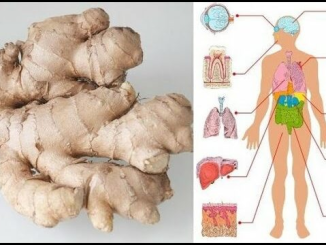
Residents of Oklahoma found a mysterious hard sac-like ‘egg’ hanging from the tree roots at the lake, but scientists are now calming the locals, who immediately jumped to conclusions of alien proportions, by explaining that it’s an ancient creature

These creatures have found the right space and environment, so its likely they’ll be around a lot this summer.
Locals in Oklahoma discovered large, jelly-like sacs with a hard exterior hanging from tree roots; they immediately thought the answer was extraterrestrial. Or at least not good news.
But scientists, reassuring the public, have said that the locals in the area got a rare treat – the glimpse of the reproductive system of an ancient animal that’s been around since before the dinosaurs.
Immediately, locals put it up online, and spectators began commenting on the extraterrestrial-looking eggs. But scientists say that the creatures were simple bryozoans. They’ve been around for hundreds of millions of years, before the first dinosaurs roamed the planet. The animals may actually be good news for the lake.

These bizarre creatures are actually hundreds of tiny bryozoans.

Officials reassured the public that the animals are absolutely supposed to be there
Bryozoans clone themselves into large masses to filter tiny particles out of the water for food, cleaning up the lake. The critters normally reside in ponds and lakes. This time, it was found in McGee Creek Reservoir, located on the southwest edge of the Ouachita Mountain Range.
Bryozoan clumps aren’t an egg or just one animal at all. They form this hard shell as they are hundreds of creatures banded together. The pods, known as zooids, are each a fraction of a millimeter long. They lack any respiratory or circulatory systems, but their central nerve ganglion allows the animal to respond to stimuli.

These pods are hanging from tree roots, and actually help clean the lake
The tiny invertebrates possess both male and female reproductive organs, allowing them to self-clone and spread through clumps of cells on the organism known as statoblasts.
Each statoblast can reproduce asexually. They do this by breaking off from a colony, allowing the animal to reproduce rapidly if the space and the weather are suitable. The animals eat phytoplankton and bacteria lurking in water.
Join the Mirror’s SMS news service to get the biggest breaking stories delivered straight to your phone. Click here to subscribe.
Fossil records suggest they may have evolved from an ancient marine worm. Their grandparents, ancient bryozoans, date back as far as 470 million years. For perspective, dinosaurs came around 245 million years ago.
The Oklahoma Department of Wildlife Conservation (ODWC) shared the photos on social media. “What is that??? If you’re out boating somewhere like McGee Creek Reservoir you may notice these strange jelly-like balls hanging from submerged tree limbs,” begins the post.
“These are Bryozoans, and they’ll likely show up in large numbers this summer. Don’t be alarmed these microorganisms are native and are of no danger to you or wildlife. In fact, they are an indicator of good environmental quality and clear water!”
Barbra Streisand and her husband James Brolin reveal a juicy secret they have kept for decades during their 25th anniversary celebration

Barbra Streisand and James Brolin are celebrating their 25th wedding anniversary this year. The couple opened up about their journey together and reflected on what it means to find love later in life.
They recently revealed a surprising secret about their relationship that had been kept secret for years. Read on to find out what they shared!
Their love story, like many others, began with a blind date. Barbra was dating James, but had a different idea of what he would look like. She expected a man with a full head of hair and a beard and was surprised to find Brolin bald.

True to her easy-going nature, Streisand didn’t hold back and jokingly pointed out that his hair was a bit messy. Instead of being offended, Brolin immediately felt a connection and realized she was someone special. While it took Streisand a few more outings to fully accept her feelings, the two soon fell in love and married in 1998.
This was not her first marriage; Streisand was previously married to Elliot Gould from 1961 to 1973, with whom she has a son, Jason. Brolin has also had two previous marriages, first to casting agent Jane Agee for 20 years and then to Jane Smithers for almost a decade. From these relationships he has three children: Josh, Jess and Molly, and four grandchildren: Eden, Trevor, Westlyn and Chapel.
Brolin often expresses his deep affection for Streisand, once saying: “Every night is a new adventure. Sleeping is a waste of time. I can’t wait to see her again in the morning”.

In a recent interview with Gayle King on CBS Mornings, the couple celebrated their milestone anniversary by sharing a surprising revelation: Brolin was celibate for three years before meeting Streisand.
“I was literally abstinent for three years and I asked myself: ‘Who needs that?’” he confessed, which provoked disbelief from King. Streisand playfully admonished him, shouting: “You can’t say that!”
When asked about his long period without intimacy, Brolin explained: “I had no interest in getting involved in a crappy situation”. Reflecting on their connection, he remarked: “After three years, that must have been one hell of a night?” to which he replied: “Wild!”

His reluctance stemmed from his previous marriages, as he did not want to enter into another unfulfilling relationship. However, a friend encouraged him to meet Barbra and the rest is history. It took some persuasion, but after asking her three times, Streisand finally agreed to marry him.
It’s surprising to learn that Brolin was celibate for such a long time! Their story is heartwarming and shows how they found each other despite all the odds. What do you think about their pairing? Share it in the comments! Feel free to pass this on to others to know their thoughts!



Leave a Reply